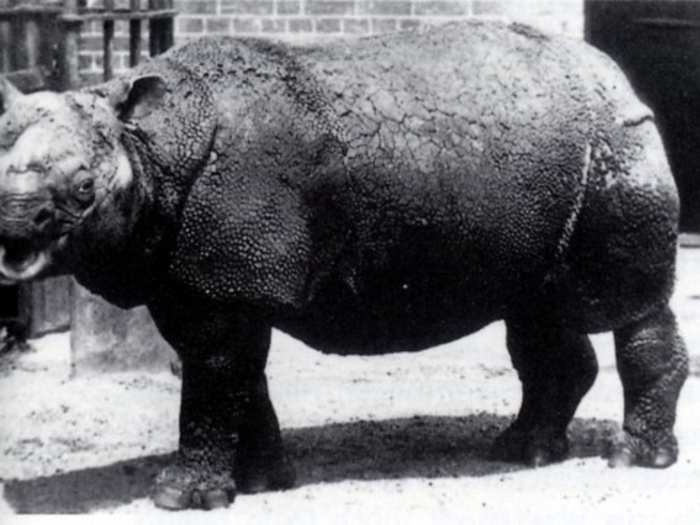

Javan Rhino is one of the world’s rarest animal species. There are less than 75 of them left. Most of the Javan rhinos are at Ujung Kulon National Park in Java, Indonesia.
Javan rhinos are often confused with one-horned rhinoceros but have a smaller head and lesser skin folds. It once roamed across north India but turned extinct in the South Asian country in the 20th century.

The Sumatran rhino, popularly known as Asian rhino with two horns, is the second most endangered of all rhinos. Most of them are living in Indonesia under heavy protection. There are fewer than 80 of these rhinos which are on the brink of extinction.
The species witnessed a rapid decline because of deforestation and poaching. More than 70% of the population has been depleted in the last two decades. Rhinos are hunted for their horns used in traditional medicines in many parts of Asia.
In 2019, the last female Sumatran rhino, who was about 25 years old, died at the Borneo Rhino Sanctuary in Tabin Wildlife Reserve.

The greater one-horned Rhino, also popularly known as Indian Rhino, is one of the few species which have witnessed an increase in population over the past few years.
The Indian rhino was at the brink of extinction in the early 20th century. There were less than 200 rhinos left at the time. India managed to increase its population to more than 3,700 by 2020.
India is home to more than 80% of the greater one-horned rhino population of the world. Rare one-horned rhinos can be found in Assam, West Bengal, and Uttar Pradesh. However, despite stringent measures, poachers continue to hunt them.

Black Rhinos are native to the eastern and southern parts of Africa.
Between 1960 and 1995, the population of Black Rhino shrunk by a massive 98% to merely 2,500. But, its population has doubled in the last 20 years to around 5,600 now.
They are hunted for their horns. Male black rhinos can grow their horns three inches a year, while females can grow their horns to up to 5 inches a year. Rhino horns are used in Chinese medicines and even for decorative purposes in the Middle East.

Unlike its name, the White Rhino looks just like Black Rhino, however, has a different lip shape. White Rhinos have squared lips. Its name comes from the West Germanic word ‘weit” which means wide. The white rhino also has two subspecies — northern and southern white rhino.
There are around 18,000 species of White Rhino left in the world. Most of them are found in Africa’s grassy plain — South Africa, Namibia, Zimbabwe, and Kenya.
The northern white rhino is on the brink of extinction, with only two of them left on the planet. Both northern white rhinos — Fatu and Najin — are female and are currently living at the Ol Pejeta Conservancy in Kenya. The last male northern white rhino died in 2018. Fatu and Najin can’t get pregnant.
 Thailand is now welcoming Indians with open arms, but are its drought-hit islands really prepared for a tourism influx?
Thailand is now welcoming Indians with open arms, but are its drought-hit islands really prepared for a tourism influx?
 Thoughtful gift ideas to make Mother's Day extra special
Thoughtful gift ideas to make Mother's Day extra special
 Muslims up, Hindus down: What’s the larger picture behind India’s religious population trends?
Muslims up, Hindus down: What’s the larger picture behind India’s religious population trends?

Copyright © 2024. Times Internet Limited. All rights reserved.For reprint rights. Times Syndication Service.